
How do trade platforms influence steel and metals markets in West Asia?
Steel and metals like copper, aluminum, silver, and zinc represent the backbone of industrialization and economic growth across the globe, with the Middle East and West Asia emerging as critical regional hubs for these industries. Steel, in particular, is indispensable to infrastructure development, automotive manufacturing, and construction industries. In West Asia, steel products like rebars, beams, channels, and galvanized wires are heavily traded, with prices influenced by factors such as market demand, raw material costs, and energy prices. Verified exporters and importers on B2B marketplaces ensure smoother trade of these commodities. The Asia Iron and Steel Market is a dynamic and evolving sector, supported by supply chain solutions and regional trade platforms that connect buyers and sellers. For example, girder and beam production factories in the Middle East are increasingly leveraging technology and trade advertising platforms to streamline operations and expand their reach. Hot-rolled sheets and cold-rolled sheets dominate demand due to their varied applications, while galvanized wires and steel corner profiles represent niche yet vital segments. Beyond steel, metals such as silver, zinc, gold, and copper hold immense potential in West Asia’s trade economy.
Silver’s price is affected by global supply and demand trends, with its applications ranging from electronics to jewelry. Zinc, abundant in the earth"s crust, remains integral to industrial applications like galvanization and biological processes. Gold continues to be a cornerstone of the Middle Eastern economy, with traders focusing on its price volatility and investment opportunities. Copper and aluminum markets are also pivotal, with aluminum shaping supply chains due to its lightweight and versatile properties. Platforms like Aritral simplify international trade by offering AI-driven tools for product listing, direct communication, and market insights. These innovations empower businesses to navigate complexities in the Middle East’s commodity trade landscape efficiently, making it easier to connect with verified suppliers and optimize trade networks. "
-
 Mohammad Javad Baqeri 1 months ago
Mohammad Javad Baqeri 1 months ago Iran
Aluminum, iron and steel, pickles, dried fruits and groceries, saffron and spices, metal waste, gold, tar, dairy products, jam and honey, copper, silv
Iran
Aluminum, iron and steel, pickles, dried fruits and groceries, saffron and spices, metal waste, gold, tar, dairy products, jam and honey, copper, silv
I\m directly in contact with all those suppliers from Iran`Details
-
 Yahya 2 months ago
Yahya 2 months ago Mauritania
Stone
Mauritania
Stone
Raw stoneDetails
-
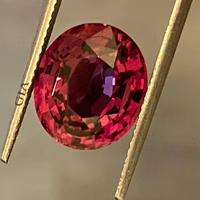 Ahjar Karima Wa Niyazk 3 months ago
Ahjar Karima Wa Niyazk 3 months ago United Arab Emirates
Stones and Meteorites
United Arab Emirates
Stones and Meteorites
Precious and semi-precious stones, rare and common, meteorites, and volcanic rocksDetails
-
 Ahmet Ebu Halıl 3 months ago
Ahmet Ebu Halıl 3 months ago Turkey
Existing
Turkey
Existing
Iron raw materialDetails
-
 Ali Rahmani 3 months ago
Ali Rahmani 3 months ago Iran
Antique Antiquities
Iran
Antique Antiquities
My goods are unique and exceptionally beautiful, from the pre-Achaemenid period to antique pieces and animal sculptures inlaid with silver and gold, a...Details
-
 Baran 4 months ago
Baran 4 months ago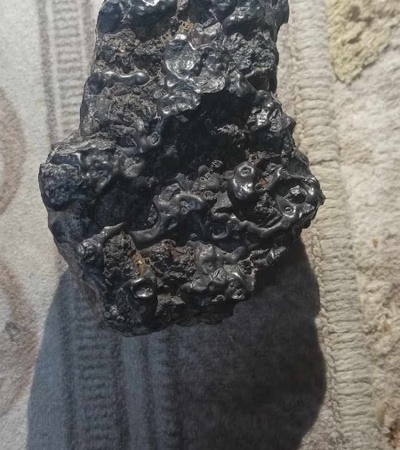 Iraq
Meteor
Iraq
Meteor
$$Details
-
 Jolfa Tejarat Rahim Aras 4 months ago
Jolfa Tejarat Rahim Aras 4 months ago Iran
Various Types of Building Materials and Dry Goods
Iran
Various Types of Building Materials and Dry Goods
Exporting various types of steel with the shortest loading time and timely delivery at the lowest pricesDetails
-
 Altinhat Diş Ti̇caret 6 days ago
Altinhat Diş Ti̇caret 6 days ago Turkey
LEADING SUPPLY COMPANY IN THE CONSTRUCTION AND FOOD SECTOR
Turkey
LEADING SUPPLY COMPANY IN THE CONSTRUCTION AND FOOD SECTOR
CALL US FOR INFORMATION ABOUT QUALITY PRODUCTS AND PRICESDetails
-
 Hamza Hassan 5 months ago
Hamza Hassan 5 months ago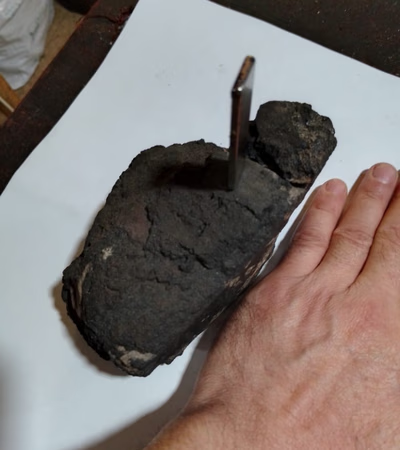 Lebanon
Meteorite
Lebanon
Meteorite
I have alot of meteorite that I wanna sell on this websiteDetails
-
 Gulha Trading Import & Export 8 months ago
Gulha Trading Import & Export 8 months ago Qatar
Gold
Qatar
Gold
Gold Trading From Nairobi Kenya \nTotal - 800 KGSDetails
-
 Yemenite 9 months ago
Yemenite 9 months ago Yemen
Rough Gemstones Yemani
Yemen
Rough Gemstones Yemani
From Yemen mountains we have rough Yemeni gemstones such as emerald, oval, Moldavite, black dark green stone, all kinds of Yemeni agate, jade, and mor...Details
-
 William Liang Geto New Materials 6 days ago
William Liang Geto New Materials 6 days ago China
Aluminum formwork
China
Aluminum formwork
The formwork made of aluminum for building, mainly used for concrete pouring, has the advantages of good quality, high efficiency, environmental prote...Details
-
Exploring Aluminum Trade and Industry in West Asia and the Middle East

Aluminum, known for its versatility, lightweight nature, and corrosion resistance, has emerged as one of the most widely used metals after iron. In the Middle East, aluminum plays a key role in trade and industrialization, with West Asia serving as a vital hub for its production, export, and import. The aluminum industry in the region is supported by robust supply chain solutions, verified exporters and importers, and growing demand from various sectors such as construction, transportation, and packaging. West Asia’s aluminum industry thrives due to its access to abundant raw materials like bauxite and cost-effective energy resources. Aluminum products in the market include ingots, slabs, wires, and foils, each catering to distinct industries. For instance, aluminum foil finds widespread applications in packaging and insulation, while ribbed aluminum foil is highly valued in architectural design. Aluminum ingots, classified by alloy series such as 1000, 3000, and 5000, serve as a benchmark in pricing and application due to their varied properties. Factors influencing aluminum prices include global demand, energy costs, and regional trade policies.
Platforms focusing on commodity trade in the Middle East, such as Aritral, enable seamless connections between verified buyers and suppliers, fostering transparency and efficient transactions. Moreover, the aluminum industry dovetails with markets for other metals like copper, zinc, and steel, reflecting the interconnected nature of the region’s metallurgy sector. The future of aluminum in the Middle East is promising, driven by increasing urbanization, infrastructure projects, and its sustainability as a recyclable material. By leveraging market insights and B2B platforms, businesses can capitalize on the growing demand for aluminum and its derivatives, ensuring their foothold in the competitive West Asian market.
-
Brass Trade Dynamics in Middle Eastern Markets

Brass, an alloy of copper and zinc, plays a pivotal role in the trade dynamics of West Asia and the Middle East. This region serves as a vital hub for commodity trade, connecting global markets with local supply chains. Brass, valued for its durability, corrosion resistance, and versatility in applications ranging from construction to electronics, has seen increasing demand across industries. Verified exporters and importers in the Middle East leverage advanced trade platforms to foster efficient trade networks, enabling seamless transactions for brass products. Marketing and trade of brass alloys in Middle Eastern markets are driven by strategic B2B marketplace platforms. These platforms facilitate product listings, trade advertising, and business networking, allowing buyers and sellers to explore global opportunities for brass and its applications. Regional insights on pricing, supply chain solutions, and market trends are crucial for stakeholders aiming to capitalize on this lucrative commodity. The broader metals market in West Asia—including steel, silver, copper, nickel, aluminum, zinc, gold, and platinum—also benefits from such platforms.
For instance, silver’s industrial uses and fluctuating prices are shaped by B2B marketplaces that streamline supply chains. Similarly, copper trade in Middle Eastern and West Asian markets is bolstered by verified networks, ensuring stable supply dynamics. Aritral, an AI-driven B2B platform, supports such international trade by offering tools like AI-powered marketing and global sales assistance, along with direct communication features. By simplifying trade processes, platforms like Aritral enable stakeholders to navigate the complexities of commodity trade and unlock new opportunities in metals markets.
-
Copper Trade Trends in Middle East & West Asia

Copper, one of the most versatile metals, is essential for industries ranging from construction to electronics. The Middle East and West Asia have emerged as critical hubs for copper trade, driven by rising industrial demand and the region"s strategic location as a transit point between Asia, Europe, and Africa. The West Asia Copper Exchange plays a pivotal role in facilitating trade, providing market insights, and connecting verified exporters and importers. As copper prices fluctuate due to global economic shifts, regional B2B marketplaces and trade advertising platforms help businesses navigate complex supply chains and capitalize on opportunities. Copper"s uses are diverse, including electrical wiring, plumbing, and industrial machinery, making it indispensable in modern economies. In addition, recycling copper offers environmental benefits and supports sustainability. Methods such as smelting and electro-refining are used to create copper ingots, which are foundational for manufacturing processes. Copper alloys like brass and bronze further expand its applications in industries like decoration and automotive manufacturing.
Market dynamics in West Asia show increasing demand for copper, correlating with urbanization and industrial growth. Verified exporters on B2B platforms provide reliable supply chain solutions, ensuring consistency in regional product listings. This ecosystem also supports trade in other metals such as steel, silver, aluminum, and zinc, each playing a unique role in the commodity trade landscape. Copper, however, remains a cornerstone, influencing pricing dynamics and fostering economic growth across the Middle East. Aritral, an AI-driven B2B platform, contributes to this thriving industry by simplifying copper trade through product listings, direct communication, and AI-powered marketing tools. By connecting regional stakeholders, Aritral aids in navigating market complexities, ensuring smooth transactions, and unlocking new business opportunities.
-
Exploring the Gold Market and Trade Dynamics in the Middle East

The gold market in the Middle East and West Asia is a cornerstone of the global metals trade, deeply rooted in the region"s history and culture. Gold"s discovery in West Asia dates back thousands of years, and today, the Middle East remains a thriving hub for gold mining, trading, and jewelry manufacturing. Verified exporters and importers leverage regional trade platforms to facilitate the flow of gold, ensuring transparency and reliability in supply chains. In recent years, B2B marketplaces in Asia have emerged as pivotal players, offering regional product listings and connecting Middle Eastern gold traders with global buyers. These platforms provide market insights, helping businesses navigate fluctuating prices influenced by currency stability, geopolitical factors, and demand in industries like jewelry, electronics, and investments. For instance, the price of gold is closely tied to global economic conditions and is expected to remain volatile in the coming year. Gold"s applications in the region extend beyond jewelry, including its use in electronics and as a financial asset. Jewelry manufacturing wages in the Middle East vary significantly, influenced by craftsmanship and market demand.
Buyers are advised to distinguish between new and second-hand gold jewelry by examining hallmarks and wear patterns. Middle Eastern traders emphasize transparency and quality assurance, making the region a premier destination for gold transactions. Aritral, an AI-driven B2B platform, supports the gold and metals market by simplifying trade processes. Through verified profiles, AI-powered marketing, and direct communication tools, Aritral helps connect regional stakeholders with global opportunities, enhancing supply chain efficiency for commodities like gold, silver, and other metals. "
-
Nickel Trade and Market Insights in Middle East & West Asia
Nickel, a vital industrial and strategic metal, plays a significant role in global commodity trade, particularly across the Middle East and West Asia. Known for its corrosion resistance and high melting point, nickel is essential in stainless steel production, battery technology, and various alloys such as brass. In West Asia, nickel trade dynamics are shaped by regional demand in infrastructure, automotive, renewable energy, and electronics industries. Verified exporters and importers leverage platforms like Aritral to explore opportunities, streamline supply chains, and analyze market trends. The Middle East"s B2B marketplace fosters connections among nickel suppliers and buyers, facilitating trade advertising and networking. Nickel"s industrial importance aligns with broader metals trade, including steel, copper, aluminum, and zinc. Supply chain solutions offered by these platforms connect regional businesses and enhance transparency in pricing, demand forecasting, and verified transactions. Nickel"s global significance is further underscored by its role in emerging technologies such as electric vehicle batteries, influencing trade agreements and regional market strategies.
Market insights reveal significant growth opportunities for nickel in the Middle East, particularly as urbanization and industrialization fuel demand for stainless steel and nickel-based alloys. Trade platforms are instrumental in connecting regional product listings, providing market insights, and facilitating connections between suppliers and buyers in the rapidly evolving commodities landscape. The integration of AI-driven tools, such as those offered by Aritral, simplifies global trade dynamics and promotes efficient communication and refined advertising strategies. In addition, nickel’s supply chain is impacted by trends in other metals like silver, copper, and gold, which share overlapping markets and applications. By exploring verified B2B networks, businesses can tap into regional nickel markets while addressing logistical challenges and identifying new growth avenues. Such platforms are reshaping trade dynamics in West Asia and the Middle East, paving the way for enhanced cooperation and sustainable practices in the metals industry. "
-
Exploring Platinum Trade Dynamics in Middle East & West Asia
Platinum, a critical component in industrial applications, is gaining increased attention across the Middle East and West Asia due to its unique properties and diverse uses. As a high-value metal, platinum is integral to automotive catalysts, jewelry, and electronic applications, making its trade dynamics pivotal in the region. The Middle East’s strategic location as a global trade hub enables seamless import and export activities, supported by emerging B2B marketplaces that connect verified buyers and sellers. These platforms are transforming the commodity trade landscape by streamlining transactions, enhancing transparency, and providing market insights. Platinum demand in West Asia is driven by industrial growth and increasing investments in high-tech sectors. Supply chain solutions offered by regional trade platforms enable businesses to navigate logistical challenges, ensuring timely delivery of this precious metal. Verified exporters and importers listed on these marketplaces further boost confidence in transactions, while detailed product listings provide vital insights into pricing trends and quality specifications. In addition to platinum, metals like steel, silver, copper, aluminum, and zinc also play critical roles in the region"s commodity trade.
For instance, copper’s role in electrical infrastructure and silver’s application in solar energy technologies highlight the growing emphasis on sustainability-driven markets. Meanwhile, the gold trade remains a cornerstone of the Middle Eastern economy, with B2B platforms facilitating connections between local suppliers and global buyers. Exploring the platinum market through such platforms unveils opportunities to tap into emerging trends, such as green technology and clean energy initiatives. Businesses leveraging these trade networks gain access to invaluable market insights, fostering growth and competitiveness. Aritral, an AI-powered B2B platform, simplifies international trade by offering services like product listing, marketing, and global sales assistance, making it a trusted partner in the region’s metals and commodities trade ecosystem. "
-
Exploring Silver Trade Dynamics in West Asia

Silver plays a pivotal role in the West Asian trade landscape, driven by its diverse industrial applications and cultural significance. As a key commodity in the Middle East"s robust import-export ecosystem, silver enjoys steady demand, bolstered by its uses in electronics, jewelry, and renewable energy technologies. Verified exporters and importers leverage B2B platforms to navigate the region"s silver market, ensuring transparency and efficiency in supply chains. The West Asian Silver Market is influenced by factors such as global economic trends, regional mining outputs, and fluctuations in demand for industrial uses, particularly in solar energy and electronics. Silver pricing in the Middle East is shaped by global market forces, currency valuations, and the availability of local mines. The region’s historical silver mines, while not as abundant as those in Latin America or Asia-Pacific, contribute to a steady supply chain and regional self-reliance. Trade platforms such as Aritral are instrumental in connecting verified buyers and sellers, showcasing regional product listings and facilitating market insights that support business networking. Furthermore, the Middle East"s silver trade is interconnected with other metals like gold, copper, and zinc, highlighting the region"s role as a hub for multi-metal trade.
Trends point toward growing demand for silver paste production, which has emerged as a key innovation in the region. Future supply and demand forecasts indicate an upward trajectory, driven by expanding industrial applications and the rising prominence of B2B marketplaces that streamline trade operations. The strategic integration of silver into West Asia’s commodity trade underscores its importance as a tradable asset. Platforms like Aritral ensure seamless transactions and deliver AI-powered market insights, fostering confidence in a dynamic trade environment.
-
Steel and Metals Trade Dynamics in Middle East and West Asia

Steel and metals like copper, aluminum, silver, and zinc represent the backbone of industrialization and economic growth across the globe, with the Middle East and West Asia emerging as critical regional hubs for these industries. Steel, in particular, is indispensable to infrastructure development, automotive manufacturing, and construction industries. In West Asia, steel products like rebars, beams, channels, and galvanized wires are heavily traded, with prices influenced by factors such as market demand, raw material costs, and energy prices. Verified exporters and importers on B2B marketplaces ensure smoother trade of these commodities. The Asia Iron and Steel Market is a dynamic and evolving sector, supported by supply chain solutions and regional trade platforms that connect buyers and sellers. For example, girder and beam production factories in the Middle East are increasingly leveraging technology and trade advertising platforms to streamline operations and expand their reach. Hot-rolled sheets and cold-rolled sheets dominate demand due to their varied applications, while galvanized wires and steel corner profiles represent niche yet vital segments. Beyond steel, metals such as silver, zinc, gold, and copper hold immense potential in West Asia’s trade economy.
Silver’s price is affected by global supply and demand trends, with its applications ranging from electronics to jewelry. Zinc, abundant in the earth"s crust, remains integral to industrial applications like galvanization and biological processes. Gold continues to be a cornerstone of the Middle Eastern economy, with traders focusing on its price volatility and investment opportunities. Copper and aluminum markets are also pivotal, with aluminum shaping supply chains due to its lightweight and versatile properties. Platforms like Aritral simplify international trade by offering AI-driven tools for product listing, direct communication, and market insights. These innovations empower businesses to navigate complexities in the Middle East’s commodity trade landscape efficiently, making it easier to connect with verified suppliers and optimize trade networks. "
-
Zinc Trade Insights in West Asia & Middle East Metals Market

Zinc plays a pivotal role in the industrial and trade ecosystem of West Asia and the Middle East. As one of the most versatile metals, it is abundant in the earth"s crust, with significant applications ranging from galvanization in steel to manufacturing alloys like brass and nickel. The Middle East and West Asia are key players in the zinc market, supported by robust supply chain networks and verified exporters facilitating regional and international trade. Zinc ingots, categorized under HS codes such as 790111 and 790120, are highly sought after due to their durability and corrosion resistance. Leading manufacturers in West Asia are recognized for producing high-quality zinc ingots, with some of the most modern facilities located in the UAE and Saudi Arabia. Demand for zinc is driven by construction, automotive, and health industries, where it is used in galvanizing steel, producing batteries, and serving as an essential trace element for human health. B2B marketplaces in Asia, such as Aritral, enable seamless communication between buyers and suppliers and provide real-time market insights, fostering transparency in commodity trade. Verified exporters and detailed product listings ensure that businesses can confidently explore zinc ingot sourcing options and evaluate pricing trends.
In the broader metals market, zinc competes with copper, aluminum, and silver, each finding unique niches in Middle Eastern supply chains. Trade platforms influence these dynamics by offering market insights and connecting regional manufacturers to global buyers. Looking ahead, the zinc industry in West Asia is expected to grow due to increased demand for sustainable and durable materials, with prices forecasted to remain stable amidst fluctuating energy costs. For buyers, understanding market trends and leveraging B2B trade platforms is crucial in navigating this competitive landscape effectively. "
-
Steel Rod Wire And Its Price

The price of steel wire is significantly influenced by the cost of raw materials, particularly steel billets and rods. Fluctuations in the prices of iron ore, coal, and other inputs directly affect production costs. Demand dynamics play a crucial role; increased demand from sectors like construction can drive prices up, while oversupply can lead to price drops. The global economic climate, including growth rates and inflation, also impacts pricing indirectly. Government regulations regarding taxes, duties, and environmental compliance can alter cost structures and pricing strategies. The complexity of the steel industry means that various interconnected factors influence prices over time and across regions. Steel wire is essential in multiple industries such as carpentry and manufacturing, with different types available including black and white rod wire. Black wire is produced through high-temperature processes that enhance flexibility, while tensile wire undergoes cold drawing for desired thickness.
International trade dynamics further complicate pricing; currency exchange rates and trade policies like tariffs can affect import/export costs. Additionally, manufacturing costs related to labor and energy impact pricing strategies among competitors in the market.
-
How to determine the price of steel products in the market?

The price of steel products is primarily influenced by the costs of raw materials like iron ore and scrap metal, alongside demand and supply dynamics. Key factors affecting demand include construction activity, manufacturing output, and global economic conditions. On the supply side, production capacity, import/export volumes, and inventory levels play significant roles. Additionally, production costs such as energy, labor, and transportation vary by location and efficiency of steel mills. The competitive landscape also impacts pricing strategies through competitors" market share and product differentiation. Staying updated on market trends from industry experts is crucial as trade policies and technological advancements can shape the steel market"s future. The price of steel directly affects various sectors including housing, automotive, and energy production. Understanding these dynamics is essential for businesses involved in the steel industry to make informed pricing decisions.
Historical pricing data can reveal trends that assist in forecasting future prices. Currency fluctuations also impact international trade costs for steel products. Businesses must consider value-added services when determining their pricing strategy to align with market positioning and profit margins.
-
Stud (Channel beams) Industry in West Asia
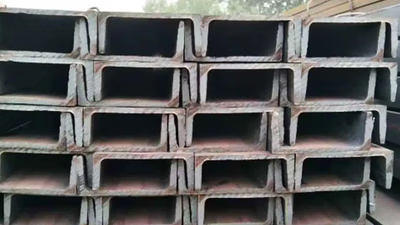
West Asia"s steel profiles industry is thriving, driven by advanced manufacturing facilities that produce a variety of steel products, including beams, channels, and custom profiles. These products are essential for construction and infrastructure projects across the region. Governments are actively supporting the sector through investment incentives and favorable policies to stimulate growth. Manufacturers are adopting cutting-edge technologies like CAD and CAM systems to improve efficiency and quality, ensuring they meet international standards. The region"s strategic location enhances its export potential, allowing manufacturers to reach global markets effectively. The demand for steel profiles is fueled by rapid urbanization and government initiatives in construction, making West Asia a key player in the global steel market. Studs, a specific type of steel profile, are widely used in various applications such as trusses and bridges. They come in different grades based on their specifications and applications, with variations including light and heavy types as well as mesh and simple designs. The ongoing growth in construction activities across West Asia indicates a robust future for the steel profiles industry.
-
Steel corner profiles or angle bars

Steel corner profiles, or angle bars, are essential components in construction and manufacturing, made from hot-rolled or cold-formed steel. Their strength and durability depend on the steel grade and thickness, with common materials including carbon, stainless, and alloy steel. These profiles are widely used for structural support in buildings, bridges, and towers, as well as in fabricating machinery and equipment. They also serve decorative purposes in architectural design and are popular among DIY enthusiasts for custom projects. The L-shape of these profiles provides stability and load-bearing capacity, making them suitable for various applications. Steel angles can be connected through welding or bolts to enhance structural integrity. Available in different sizes and finishes, including galvanized options for corrosion resistance, the choice of equal or unequal leg lengths is determined by specific project requirements. Understanding the properties of steel corner profiles is crucial for selecting the right type for any construction or manufacturing project.
-
Galvanized wire and its market in West Asia

Galvanized wire, produced in thicknesses ranging from 1. 2 to 4 mm, is essential in various applications including fencing, agriculture, and construction. It is categorized into soft and hard types based on carbon content, affecting its hardness. The production methods include hot and cold galvanizing, with hot galvanizing being prevalent in Western Asia and Iran. Rabitz wire, a specific type of galvanized wire at 1. 2 mm thickness, is commonly used for rabbit enclosures. Additionally, wire scoops (1. 5 mm thick) are utilized for granite rock handling.
Cold rolled sheets undergo a process that enhances strength and surface quality post hot rolling, which occurs at high temperatures above 926 °C. This method allows for easy shaping but may result in surface imperfections requiring further finishing. Hot rolled sheets are characterized by their non-shiny surface and are often referred to as black sheets due to their exposure to air during production. Saba Steel Complex is a notable producer of hot rolled sheets in the region.
-
Price of angle in the Middle East

West Asia"s steel industry is robust, with key players like Saudi Arabia, Iran, Turkey, and the UAE producing a variety of steel profiles, particularly angle bars. The construction sector is the primary consumer of these steel corner (L) profiles due to ongoing infrastructure development and urbanization in the region. Steel angles are essential for building frames, supports, and reinforcements in both construction and industrial applications. The demand for these profiles is further fueled by the region"s industrialization and diversification efforts. West Asia not only meets local needs but also serves as a significant exporter of steel profiles to neighboring regions such as North Africa. Factors influencing the market include domestic production capacities, economic conditions, and regional trade dynamics. Governments are actively promoting the steel industry through favorable policies and investments to enhance local production capabilities. Industry associations play a crucial role in supporting growth through collaboration and knowledge sharing among stakeholders. Steel corner (L) profiles from West Asia typically comply with international quality standards like ISO 9001, ensuring their competitiveness in global markets.
-
Girder (beam) manufacturers in the Middle East

Emirates Steel stands out as a premier steel producer in the Middle East, specializing in structural steel products like girders. Their advanced facility in Abu Dhabi caters to various sectors, including construction and oil and gas. While Saba Steel Industrial Nigeria Limited is not based in West Asia, it plays a crucial role in supplying girders to West Africa. Understanding the different types of beams—IPE, INP, and IPB—is essential for buyers, as each has unique specifications and applications. IPE beams are prevalent in Iran due to their European standards, while INP beams follow Russian and Chinese standards. The IPB standard features wider wings compared to IPE. Notable manufacturers such as Iran National Steel Group and Teba Steel contribute significantly to the regional market by producing diverse steel products for both domestic use and export. Buyers should also consider technical specifications when selecting beams, as indicators like "V" for heavy or "L" for light can influence their choice.
Overall, the Middle East"s steel industry is characterized by a variety of producers that meet local and international demands. "
-
Prices of rebars and other hardware in the commodity exchange
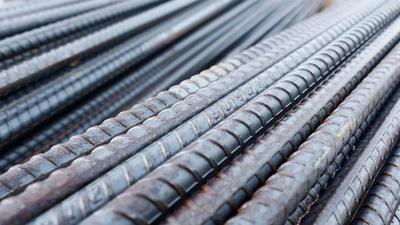
Commodity prices, particularly for rebars and iron products, are primarily influenced by supply and demand dynamics within the commodity exchange. Market participants, including traders and producers, engage in buying and selling based on their assessments of market conditions. The trading process involves executing orders based on matching bids and offers, which leads to price discovery. Various commodity exchanges, such as the London Metal Exchange and Chicago Mercantile Exchange, facilitate this trading but have different rules and structures. Regional factors like local supply dynamics and transportation costs also play a crucial role in pricing. The establishment of commodity exchanges aims to create transparent markets for trading industrial products, including steel. Notable companies in the Iranian Commodity Exchange include Isfahan Mobarakeh Steel and Khorasan Steel Complex, which contribute significantly to the supply of iron products. Futures contracts for rebar allow participants to trade at predetermined prices, reflecting market expectations that can influence spot prices.
Continuous trading activity aids in price determination as buyers and sellers interact based on current market data. Additionally, external factors such as economic indicators and geopolitical events can lead to price fluctuations.
-
Why free market is good for others and bad for us?

A free market enhances efficiency by allowing supply and demand to dictate prices, fostering competition among steel producers. This leads to improved production processes, cost reductions, and innovation. The price discovery mechanism in a free market provides transparency, enabling informed decision-making based on current conditions. Producers can adjust their strategies flexibly in response to market changes, promoting a diverse range of steel products tailored to customer needs. International trade flourishes as barriers like tariffs are removed, allowing access to global markets and comparative advantages. However, the benefits of a free market can vary based on regulatory frameworks and specific contexts. Governments can mitigate disadvantages through regulations and support for strategic industries. While competition is essential in a free market, it may also lead to speculative activities that introduce volatility and distort the market.
Additionally, external costs associated with steel production may not be reflected in prices, raising concerns about sustainability and social impacts. Market failures such as imperfect information and monopolistic behavior can result in inefficiencies and unequal benefits distribution.
-
West Asian Rebar Suppliers

West Asian countries possess abundant raw materials for steel production, particularly iron ore and scrap metal. Their strategic location between major steel-consuming regions like Europe, Asia, and Africa enhances their export capabilities. Turkey leads the rebar market with significant exports, while the UAE and Saudi Arabia also have robust steel industries catering to both domestic and international demands. Iran"s steel sector faces challenges due to sanctions but remains a key player in rebar production. The region"s construction boom, driven by large-scale projects, has increased the demand for steel rebar. Governments are investing heavily in the steel industry to foster self-sufficiency and reduce import reliance. Competitive advantages such as lower labor costs and favorable energy prices allow West Asian producers to offer attractive pricing. However, the dynamic nature of the steel market means that supply and demand fluctuations continually influence pricing strategies.
Economic diversification efforts in these countries emphasize developing a strong steel industry as a means to create jobs and reduce oil dependency. Infrastructure development fueled by urbanization and population growth further drives the need for rebar in construction projects across West Asia.
-
What are factors affecting the price of studs?

The price of studs is influenced by various factors, primarily the cost of raw materials like iron ore and scrap metal. Global commodity market fluctuations, supply and demand dynamics, and production costs significantly contribute to price volatility in the steel industry. Labor, energy, and overhead costs also play a crucial role in determining the overall price of steel sections. Infrastructure development, construction activities, and economic growth in different regions impact demand for steel sections, creating a balance that affects pricing. Competition among manufacturers can lead to price adjustments as companies strive to attract customers or maintain profitability. Additionally, international trade dynamics such as currency exchange rates and trade policies influence pricing strategies. The type, grade, and length of studs further affect their prices, which are not fixed due to market fluctuations. Consulting specialists can provide accurate pricing based on these influencing factors.
The versatility of studs makes them essential in construction processes; thus, engineers must consider their prices when estimating overall construction costs. Market dynamics such as mergers and acquisitions within the steel industry can also impact pricing strategies. Lastly, government regulations regarding labor and environmental compliance can alter production costs and affect prices.
-
What is the difference between Hot rolled sheet and cold rolled sheet?

Hot rolled sheets are produced at high temperatures, typically above 1,000°F (538°C), resulting in a rough surface and lower dimensional accuracy. They are thicker and larger, suitable for structural applications where precision is not critical. In contrast, cold rolled sheets are processed at room temperature, yielding a smoother finish and higher hardness. The production of cold rolled sheets involves additional steps like polishing and lubrication, making them more expensive—often twice the price of hot rolled sheets. Cold rolled sheets offer better dimensional accuracy and tighter thickness tolerances, making them ideal for industries requiring precise specifications such as automotive and appliances. Both types have distinct applications: hot rolled sheets are used in construction and manufacturing of pipes, while cold rolled sheets find use in metal furniture and other precision-demanding sectors.
-
Introduction of beam production factories in the Middle East

West Asia"s construction sector is booming, leading to a surge in demand for beams, essential structural components. The establishment of local beam production facilities in the Middle East is a response to this demand, driven by urbanization and economic growth. Local production reduces reliance on imports, ensuring timely supply for ongoing construction projects. Isfahan Steel Factory stands out as a top producer, known for high-quality beams that meet technical specifications. The ESCO logo indicates authenticity and quality, distinguishing Isfahan beams from lower-quality imports. As West Asian countries diversify their economies away from oil dependence, developing a robust steel industry becomes crucial for job creation and export potential. Government support through investment incentives and infrastructure development fosters the growth of beam manufacturing facilities. The region"s strategic location enhances logistics and transportation capabilities, facilitating access to various markets. Additionally, the availability of raw materials like iron ore and coal supports local steel production efforts.

































